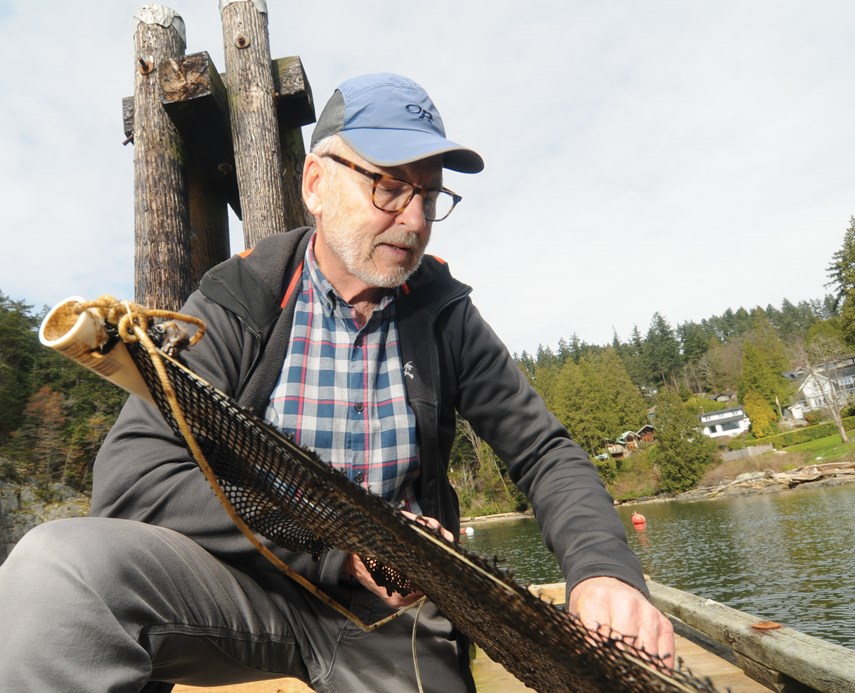West Vancouver has an acute case of herring impairment.
The West Vancouver Streamkeepers Society is wrapping up a project to encourage the herring to spawn at local docks, concluding the important feeder fish are keeping clear of local coves.
Herring are known to spawn on dock pilings but the young are typically killed off by the protective creosote coating. Streamkeeper groups in Squamish and False Creek and the Squamish Nation were “phenomenally successful” in turning things around when they tried suspending net-like curtains from the docks, giving the fish a non-toxic alternative.
But after three years of attempts, West Van streamkeepers are packing it in.
“This was an experiment we have done for three years and we have determined there doesn’t seem to be much interest for herring along the shoreline of West Vancouver at this point,” said Keith Pelletier, one of the streamkeepers who led the project.
Beginning in 2016, the streamkeepers sussed out spots along the shoreline that might be suitable, including sites at West Vancouver Yacht Club and Thunderbird Marina, and deployed nets for three months during spawning season.
The next year, they expanded into Horseshoe Bay – “and still no response,” Pelletier said.
In 2018-2019, volunteers focused on Ambleside, Dundarave, the Department of Fisheries and Oceans’ Centre for Aquaculture and Environmental Research in Sandy Cove and the public dock in Caulfeild Cove.
“They were out for about three months and all we’ve accumulated is algae,” Pelletier said. “It’s a bit frustrating for the volunteers on the herring project to not see any results in spite of pulling nets out of cold water all through the winter.”
Herring can be found from California to Alaska and play an important part in the ecosystem wherever they are.
“They’re one of the most significant fishes on the coast in that they provide food and feed for animals at every stage of their life from humans to birds, mammals, cetaceans – everything eats herring,” Pelletier said.
Sadly, it wasn’t so long ago they were plentiful in Howe Sound. But decades of habitat degradation through mine and mill runoff, dredging, logging, and loss of eelgrass saw them all but disappear.
“Anecdotally, the West Vancouver Yacht Club old-timers talk about having to literally lift the sailboats out of the water the night before the Southern Straits Race and power wash them off because they were just covered in herring spawn,” he said. “[Herring] definitely were around, and First Nations people have a long history collecting eggs and eating the herring themselves.”
In recent years, however, the herring have been making a comeback elsewhere in Howe Sound – just not on the North Shore. It raises the question. What does False Creek have – just six kilometres away – that West Vancouver doesn’t?
“We’re so close. It’s frustrating,” Pelletier said. “But if the herring aren’t coming here, there’s not much we can do.”



